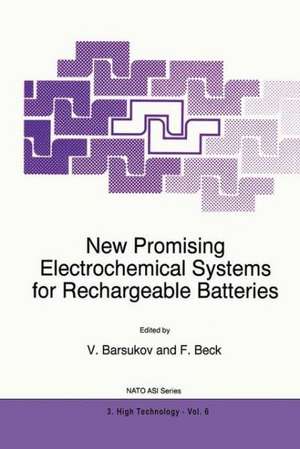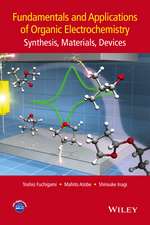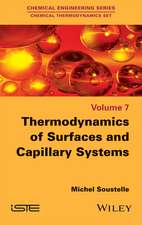New Promising Electrochemical Systems for Rechargeable Batteries: NATO Science Partnership Subseries: 3, cartea 6
Editat de V. Barsukov, F. Becken Limba Engleză Paperback – 26 sep 2011
| Toate formatele și edițiile | Preț | Express |
|---|---|---|
| Paperback (1) | 1828.11 lei 6-8 săpt. | |
| SPRINGER NETHERLANDS – 26 sep 2011 | 1828.11 lei 6-8 săpt. | |
| Hardback (1) | 1834.27 lei 6-8 săpt. | |
| SPRINGER NETHERLANDS – 29 feb 1996 | 1834.27 lei 6-8 săpt. |
Din seria NATO Science Partnership Subseries: 3
- 24%
 Preț: 1567.22 lei
Preț: 1567.22 lei - 18%
 Preț: 1992.08 lei
Preț: 1992.08 lei -
 Preț: 393.13 lei
Preț: 393.13 lei -
 Preț: 390.63 lei
Preț: 390.63 lei - 18%
 Preț: 1849.41 lei
Preț: 1849.41 lei -
 Preț: 407.19 lei
Preț: 407.19 lei - 18%
 Preț: 1228.96 lei
Preț: 1228.96 lei - 18%
 Preț: 1843.73 lei
Preț: 1843.73 lei - 15%
 Preț: 642.51 lei
Preț: 642.51 lei -
 Preț: 402.76 lei
Preț: 402.76 lei - 18%
 Preț: 1829.86 lei
Preț: 1829.86 lei -
 Preț: 379.48 lei
Preț: 379.48 lei - 18%
 Preț: 1224.54 lei
Preț: 1224.54 lei -
 Preț: 401.42 lei
Preț: 401.42 lei - 18%
 Preț: 1841.68 lei
Preț: 1841.68 lei -
 Preț: 391.99 lei
Preț: 391.99 lei - 18%
 Preț: 1234.46 lei
Preț: 1234.46 lei -
 Preț: 405.28 lei
Preț: 405.28 lei -
 Preț: 396.62 lei
Preț: 396.62 lei - 18%
 Preț: 1226.73 lei
Preț: 1226.73 lei - 18%
 Preț: 1233.52 lei
Preț: 1233.52 lei - 18%
 Preț: 1228.62 lei
Preț: 1228.62 lei - 5%
 Preț: 377.52 lei
Preț: 377.52 lei - 18%
 Preț: 1830.49 lei
Preț: 1830.49 lei - 20%
 Preț: 336.21 lei
Preț: 336.21 lei - 18%
 Preț: 1225.48 lei
Preț: 1225.48 lei -
 Preț: 397.38 lei
Preț: 397.38 lei - 18%
 Preț: 1830.65 lei
Preț: 1830.65 lei - 15%
 Preț: 650.55 lei
Preț: 650.55 lei - 5%
 Preț: 1416.66 lei
Preț: 1416.66 lei
Preț: 1828.11 lei
Preț vechi: 2229.40 lei
-18% Nou
Puncte Express: 2742
Preț estimativ în valută:
349.79€ • 365.25$ • 288.86£
349.79€ • 365.25$ • 288.86£
Carte tipărită la comandă
Livrare economică 15-29 aprilie
Preluare comenzi: 021 569.72.76
Specificații
ISBN-13: 9789401072359
ISBN-10: 9401072353
Pagini: 556
Ilustrații: XXII, 528 p.
Dimensiuni: 160 x 240 x 29 mm
Greutate: 0.77 kg
Ediția:Softcover reprint of the original 1st ed. 1996
Editura: SPRINGER NETHERLANDS
Colecția Springer
Seria NATO Science Partnership Subseries: 3
Locul publicării:Dordrecht, Netherlands
ISBN-10: 9401072353
Pagini: 556
Ilustrații: XXII, 528 p.
Dimensiuni: 160 x 240 x 29 mm
Greutate: 0.77 kg
Ediția:Softcover reprint of the original 1st ed. 1996
Editura: SPRINGER NETHERLANDS
Colecția Springer
Seria NATO Science Partnership Subseries: 3
Locul publicării:Dordrecht, Netherlands
Public țintă
ResearchCuprins
1. Improvements of Conventional Aqueous Accumulators.- 1.1 Materials for Bipolar Lead-Acid Batteries.- 1.2 Rechargeable Electrochemical Cell Studies at ESTCO.- 2. Rechargeable Lithium Batteries.- 2.1 Intercalation Materials for Lithium Rechargeable Batteries.- 2.2 Investigation of Graphite-Lithium Intercalation Anodes for Li-Ion Rechargeable Batteries.- 2.3 Reversible Li Intercalation into Carbonaceous Materials.- 2.4 Carbon Fluoride Cathode for Lithium Cells.- 2.5 Low-Melting Salts and Glasses as Lithium Battery Electrolytes.- 2.6. Dimercaptan-Polyaniline/Lithium Rechargeable Batteries with High Energy Density.- 2.7 Rechargeable Lithium Battery with Inorganic Electrolyte.- 3. Rechargeable Metall/Air-Batteries.- 3.1 3-D Zinc/Air Bipolar Rechargeable Battery.- 3.2 The Electric Fuel™ Zinc-Air Mechanically Rechargeable Battery System for Electric Vehicles.- 3.3 Applications of Bifunctional Air Electrodes.- 3.4 Advanced Half-Gas Systems for Rechargeable Batteries.- 3.5 Electrochemistry with Metal/Solid Polymer Electrolyte Membranes: Aspects of the O2 Reduction and H2 Oxidation.- 3.6 Oxide Electrocatalysts. The Case of RuO2-based Film Electrodes.- 4. Fuel Cells As Rechargeable Batteries.- 4.1 Fuel Cells as Rechargeable Batteries.- 4.2 Fuel Cell Systems for Vehicle Applications.- 5. Metal Hydride (MH)/Nickel Rechargeable Batteries.- 5.1 Chinese Advanced and Cheap Rechargeable Battery.- 5.2 Studies on Foamed Hydrogen Absorbing Electrodes.- 5.3 Application of the Hydrogen Absorbing Alloys to Ni-MH Type Accumulators.- 5.4 Electrochemical Properties of the Hydrogen Absorbing AB2 Type Alloys for Nickel-Metal Hydride Secondary Batteries.- 5.5 Electrochemical Investigation of Hydrogen Evolution and Absorption Phenomena in Nickel Based Electrodes.- 6. Conducting Polymers inRechargeable Batteries.- 6.1 Polyaniline as an Active Material for Rechargeable Batteries (Ext. Abstract).- 6.2 Conjugated Polymers as Active Materials for Rechargeable Batteries.- 6.3 Secondary Power Sources on the Basis of Conductive Polymeric Materials (Ext. Abstract).- 6.4 Fast Charge-Discharge Kinetics in Intrinsically Conducting Polymers - Intercalation and Film Relaxation.- 6.5 Charging-Discharging Process of Polypyrrole Films in Solutions of Tetraphenylborate Anions.- 7. Carbon and Carbonaceous Materials.- 7.1 Synthesis and Characterization of Carbon Electrode Materials for Rechargeable Batteries.- 7.2 Novel Type of Storage Cells Based on Electrochemical Double-Layer Capacitors.- 7.3 Precompacted Carbon Black (C.B.) — Electrodes in Aqueous Sulphuric Acid: Galvanostatic Charge and Discharge of the Electrochemical Double Layer Capacitor (ECDLC) in Single Electrodes.- 8. Metal-Free Rechargeable Batteries.- 8.1. Design and Materials for Metal-Free Rechargeable Batteries.- 8.2 On the Perspectives of Application of Monomer and Conductive Polymer Materials for Developing Metal-Free and Semi-Metal Rechargeable Batteries.- 8.3 Optimization of Cyclic Behaviour of the Metal-Free GIC/H2F2/AQ Rechargeable Battery.- 8.4 Metal-Free Graphite/HBF4/Anthraquinone Rechargeable Batteries.- 8.5 Study of Anthraquinone and Graphite Electrode Behaviour in Mixed Solvent Sulphuric Acid.- 9. Miscellaneous, Reviews.- 9.1 Advanced Rechargeable Batteries for Different Widespread Applications.- 9.2 Simulation and Optimal Design of Secondary Batteries.- 9.3 Novel Low- and Medium- Temperature Sulfur-Alkali Metal Batteries Based on Charge Transfer Complexes (CTC) (Ext. Abstract).- 9.4 Different Electrochemical Ways to Store and Generate Electrical Energy (Ext. Abstract).- Author Index.












